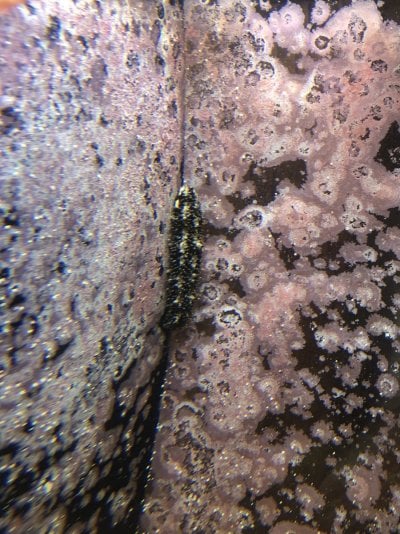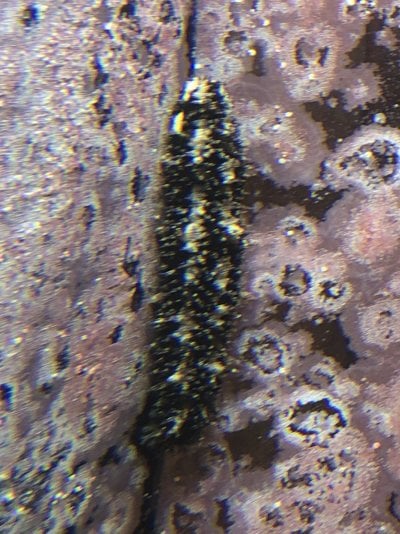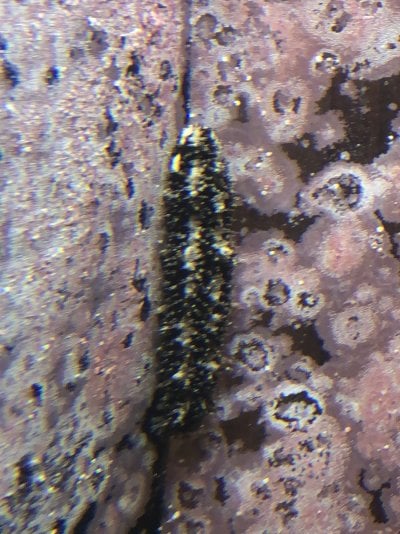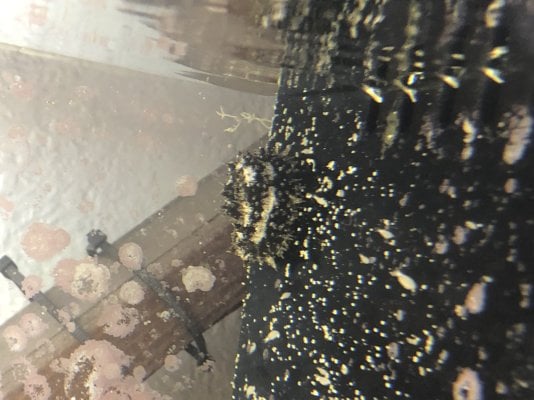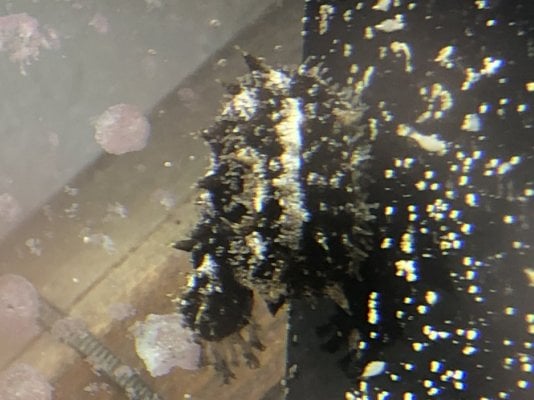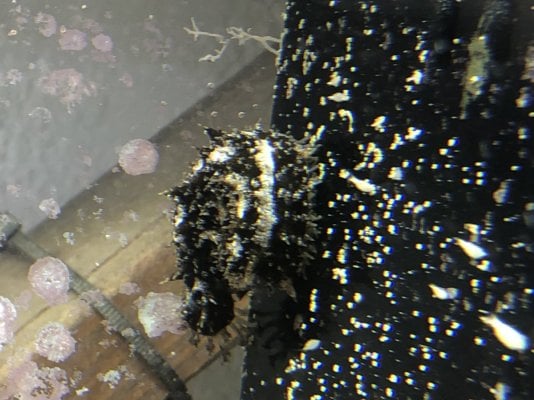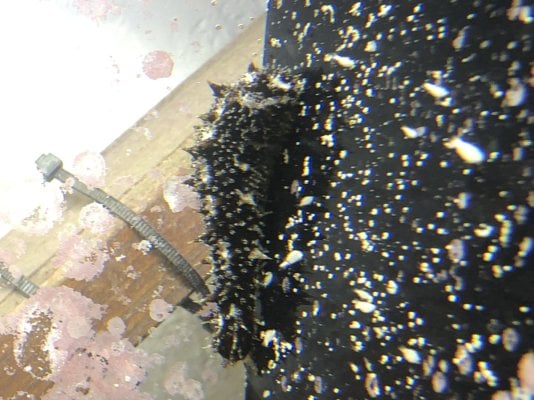Navigation
Install the app
How to install the app on iOS
Follow along with the video below to see how to install our site as a web app on your home screen.
Note: This feature may not be available in some browsers.
More options
You are using an out of date browser. It may not display this or other websites correctly.
You should upgrade or use an alternative browser.
You should upgrade or use an alternative browser.
Sea cucumber ID
- Thread starter waterdawg
- Start date
- Tagged users None
vetteguy53081
Well known Member and monster tank lover
View Badges
Partner Member 2024
Excellence Award
Reef Tank 365
RGB
Article Contributor
Tampa Bay Reef Keepers
West Palm Beach Reefer
Hospitality Award
Ocala Reef Club Member
305 Reef Club
Wisco Reefers
Midwest Reefer
Fish Medic
MAC of SW Florida
Rock Pool Reef Keepers
R2R Secret Santa 2023
My Tank Thread
My Aquarium Showcase
Looks like Holothuria nobilis
Looks like Holothuria nobilis
How confident are you with that ID ?
Any experience with that type ?
I’m having difficulty finding much info online. Any suggestions as far as online information source ?
@ISpeakForTheSeas can tell you 
vetteguy53081
Well known Member and monster tank lover
View Badges
Partner Member 2024
Excellence Award
Reef Tank 365
RGB
Article Contributor
Tampa Bay Reef Keepers
West Palm Beach Reefer
Hospitality Award
Ocala Reef Club Member
305 Reef Club
Wisco Reefers
Midwest Reefer
Fish Medic
MAC of SW Florida
Rock Pool Reef Keepers
R2R Secret Santa 2023
My Tank Thread
My Aquarium Showcase
Its a common hitchhiker and sift for detritus and food particles. Substances go in one end and out the other. I am looking again on my large screen versus phone and may be a common tiger tailHow confident are you with that ID ?
Any experience with that type ?
I’m having difficulty finding much info online. Any suggestions as far as online information source ?
I guessed it had spikes, but these are much more prominent than I expected. I'm not sure offhand on this one, but I'll look through some resources tomorrow and see if I can't figure something out. Is the color really black and white like it looks in the photos?
They're fine if they're only out of the water for a few moments - they just can't stay out long enough to start drying out (similar to how we can't stay underwater very long).
The nuking is a valid concern with cukes (some species more than others), but it's incredibly rare (I've only seen one or teo confirmed cases), and for most species as long as nothing is harassing them, they should be fine. That said, I personally recommend keeping carbon and some spare saltwater on hand just in case.
For now, I'd just try to figure out if it's a filter-feeding cuke or a sand-sifting cuke, as their needs vary pretty drastically.
Thanks,
I believe it is a sand sifter.
It is definitely black and white, true to photos.
It’s in the fuge because one of the emerald crabs wouldn’t leave it alone…
Not sure if the crab was “cleaning” it or trying to take a chunk out.
I believe it is a sand sifter.
It is definitely black and white, true to photos.
It’s in the fuge because one of the emerald crabs wouldn’t leave it alone…
Not sure if the crab was “cleaning” it or trying to take a chunk out.
Ah, yeah, that'd count as a harassing it in my book.Thanks,
I believe it is a sand sifter.
It is definitely black and white, true to photos.
It’s in the fuge because one of the emerald crabs wouldn’t leave it alone…
Not sure if the crab was “cleaning” it or trying to take a chunk out.
For sand-sifitng cuke care:
With regards to the sediment feeding cucumbers, as mentioned, you can ghost feed the tank and they'll do just fine on that. For example, the Chocolate Chip Sea Cucumber (Isostichopus badionotus) has been bred in captivity on the following diets*:
"Two feeding protocols were tested: In the first year, the broodstock were fed with commercial tilapia and rabbit feed which was ground, supplemented with Spirulina powder, and blended with disinfected beach sand (30g food/kg sand). In the second year, the food was changed to a mixture of ground Ulva sp., Sargassum sp., and Macrocystis sp. meals (Baja Kelp, Ensenanada, B.C., Mexico) blended with disinfected beach sand (30g algae mixture/kg sand). The food was changed every third day to prevent fungus formation."
I don't remember the other species I've looked at at the moment, but, generally speaking, sand sifting sea cucumbers are not picky about what they eat (though the food likely needs to be relatively decently sized so as to fit in with the sediment they're sifting - for example, the food they fed to the juvenile sea cucumbers when they reached 3 cm in the study above was sieved 55 at microns). Some easy foods you could offer that should work even for smaller cucumber species would be things like TDO Chromaboost Type A and Spirulina powder like used in the study I referenced.
I've seen a removable dish of sand mixed with food used successfully in sea cucumber aquaculture,
Edit: The study referenced in the quote above:
https://onlinelibrary.wiley.com/doi/epdf/10.1111/jwas.12061
I'd try to get the food in the ~100-500 micron range, preferably closer to 50-200 microns (especially if the cuke isn't full grown). I know foods in that size can be hard to come by - Otohime and TDO Chromaboost offer pellets in that general range, and they're amongst the best pellet feeds on the market (no pellets on the market for hobbyists are as good as fresh food or a high quality frozen food).
I don't know the Florida Sea Cucumber's (Holothuria floridana's) preferred food size, but most other species in the genus prefer feeds that range from ~60-200 microns, with a handful of exceptions that prefer either medium-small foods (~200-600 microns) or huge foods (~2,000-3,500 microns).*
Pretty much every pellet on the market will contain grains of some variety (almost always to act as a binding agent to hold the pellets together; sometimes also to provide enough calories/energy to make the food an efficient feed) - if used in small enough quantities, it's not really an issue, but when there's too much grain (too many carbohydrates) it can cause some nutrition issues.
For the spirulina, you can buy spirulina powder which will probably be closer to the right size for the cuke.
*Source:
Sophistication in a seemingly simple creature: a review of wild holothurian nutrition in marine ecosystems - PMC
Holothurians are marine invertebrates that are among the most widespread benthic megafauna communities by both biomass and abundance in shallow‐water and deep‐sea ecosystems, their functions supporting important ecological services worldwide. ...www.ncbi.nlm.nih.gov
This one is surprisingly tough to ID for how many distinctive features it has - in this case, the color is fairly distinctive; and the pattern for the color (with the consistent white spotting/stripes), the prominent spikes, and the white tips on all/most of the spikes are highly distinctive.It is definitely black and white, true to photos.
I can find some species with a couple of these features, but not with all of them.
Agreed,
it sure would be nice to know what it is. so I can plan accordingly with regards to its toxicity level.
It somewhat has the patter, spikes and mouth like a tiger tail.
It’s my understanding that if it’s not a “water column filter feeder” it will sift sand ?
It’s been in the fuge for a few days now and all it’s done is lurk on the tank sides just below the waters surface.
It’s definitely moving around but far as I can tell it hasn’t touched the sand. I’m guessing it’s acclimating ? and that is the reason for “od behavior”
Thanks
it sure would be nice to know what it is. so I can plan accordingly with regards to its toxicity level.
It somewhat has the patter, spikes and mouth like a tiger tail.
It’s my understanding that if it’s not a “water column filter feeder” it will sift sand ?
It’s been in the fuge for a few days now and all it’s done is lurk on the tank sides just below the waters surface.
It’s definitely moving around but far as I can tell it hasn’t touched the sand. I’m guessing it’s acclimating ? and that is the reason for “od behavior”
Thanks
Definitely not a Tiger Tail cuke (Holothuria thomasi) in this case; it may be a Holothuria species, but I don't know which. The closest I know at this point from that genus are H. atra, H. coluber, and H. forskali (which can be black or brown), but non of them are right from what I can tell.It somewhat has the patter, spikes and mouth like a tiger tail.
Yeah, if it doesn't filter-feed from the water column, it will sift the sand to feed (some species are known to do both).It’s my understanding that if it’s not a “water column filter feeder” it will sift sand ?
If it's staying up high and not going down to the sand, then I'd guess it's either not sensing food in the sand, or it's trying to filter feed (though the oral tentacles definitely look more like a sand-sifter than a filter-feeder).It’s definitely moving around but far as I can tell it hasn’t touched the sand. I’m guessing it’s acclimating ? and that is the reason for “od behavior”
To be safe, you can try feeding it some phyto:
The filter feeders need fed things like Isochrysis galbana (T-Iso), Tetraselmis sp., Thalassiosira sp., and Chaetoceros sp.,
Thanks again.
With the info you have, do you know if spot feeding is necessary or will it get what it needs from the sand bed ?
Will it eat “pods”
Tank has a good stable amount of various pods.
I was hoping this guy would help keep the sand cleaner…The other day I did dose with a decent amount of tiger pods. Not sure if they are to large though ?
With the info you have, do you know if spot feeding is necessary or will it get what it needs from the sand bed ?
Will it eat “pods”
Tank has a good stable amount of various pods.
I was hoping this guy would help keep the sand cleaner…The other day I did dose with a decent amount of tiger pods. Not sure if they are to large though ?
I'd suggest spot feeding to be safe unless you know a bunch of food makes it into the sand uneaten.Thanks again.
With the info you have, do you know if spot feeding is necessary or will it get what it needs from the sand bed ?
Will it eat “pods”
Tank has a good stable amount of various pods.
I was hoping this guy would help keep the sand cleaner…The other day I did dose with a decent amount of tiger pods. Not sure if they are to large though ?
It would probably eat any pods that are the right size and end up literally in the sand that it's sifting - but most pods are probably fast enough and smart enough to run away before they end up in that situation, though, so I wouldn't expect them to eat many pods at all. These guys really feed more on dead things than live things.
Adult Tigger pods (Tigriopus californicus) reportedly range from 1,000-2,000 microns, so they'd be way larger than most cukes prefer.
vetteguy53081
Well known Member and monster tank lover
View Badges
Partner Member 2024
Excellence Award
Reef Tank 365
RGB
Article Contributor
Tampa Bay Reef Keepers
West Palm Beach Reefer
Hospitality Award
Ocala Reef Club Member
305 Reef Club
Wisco Reefers
Midwest Reefer
Fish Medic
MAC of SW Florida
Rock Pool Reef Keepers
R2R Secret Santa 2023
My Tank Thread
My Aquarium Showcase
having owned a few and sold a few, they may or may not eat pods. They are scavengers and thrive well on algae, small organisms, tank waste and plankton varietyThanks again.
With the info you have, do you know if spot feeding is necessary or will it get what it needs from the sand bed ?
Will it eat “pods”
Tank has a good stable amount of various pods.
I was hoping this guy would help keep the sand cleaner…The other day I did dose with a decent amount of tiger pods. Not sure if they are to large though ?
Similar threads
- Replies
- 11
- Views
- 244
- Replies
- 13
- Views
- 239


